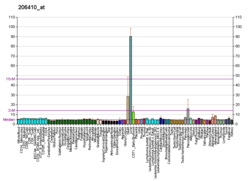The small heterodimer partner (SHP) also known as NR0B2 (nuclear receptor subfamily 0, group B, member 2) is a protein that in humans is encoded by the NR0B2 gene. [5] SHP is a member of the nuclear receptor family of intracellular transcription factors. [6] SHP is unusual for a nuclear receptor in that it lacks a DNA binding domain. Therefore, it is technically neither a transcription factor nor nuclear receptor but nevertheless it is still classified as such due to relatively high sequence homology with other nuclear receptor family members.





